Your cart is currently empty!
Tag: Decommission
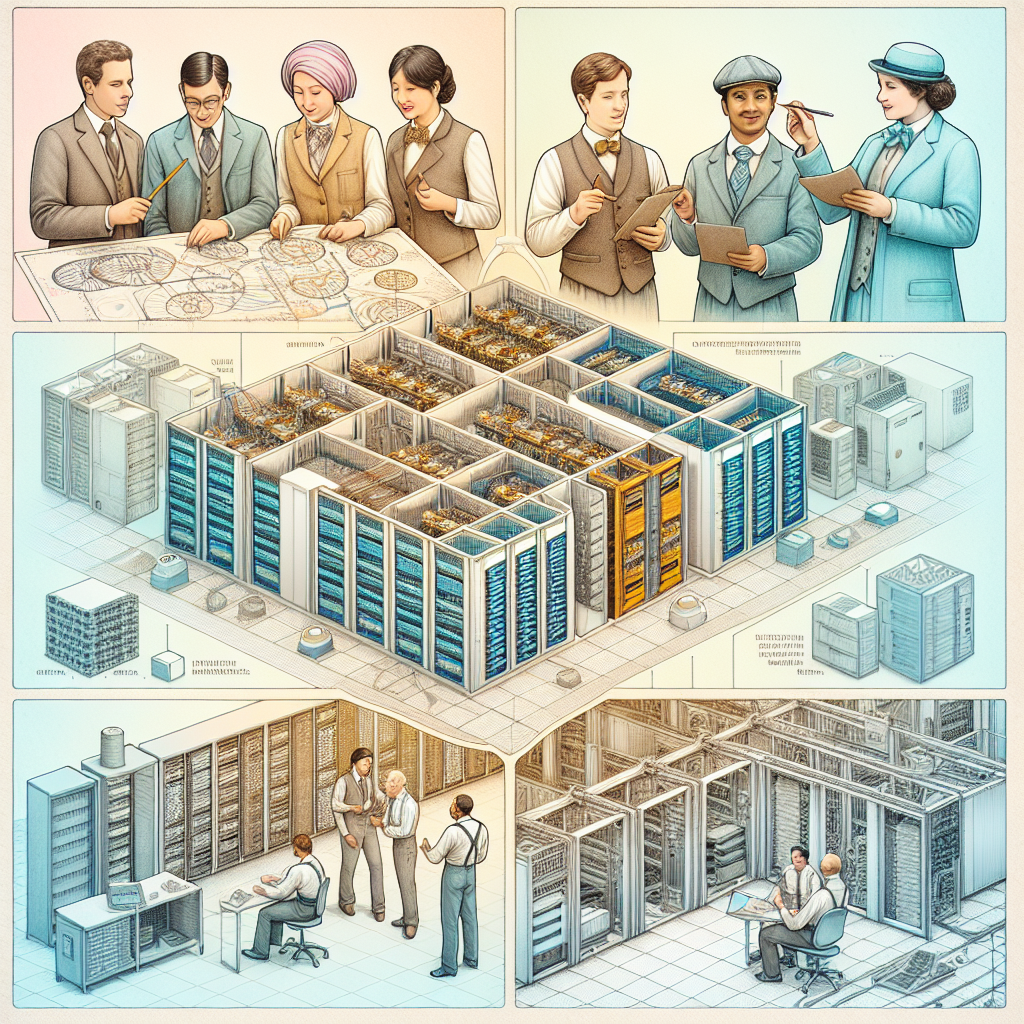
Best Practices for Data Center Lifecycle Management: From Design to Decommission
Data centers are the backbone of modern businesses, serving as the hub for storing, processing, and managing critical data and applications. As such, it is imperative for organizations to have a comprehensive and well-thought-out data center lifecycle management strategy in place. From the initial design phase to the eventual decommissioning of the facility, there are several best practices that can help ensure the smooth and efficient operation of a data center throughout its lifecycle.Design Phase:
The design phase is where the foundation for a successful data center is laid. It is crucial to carefully consider factors such as location, power and cooling requirements, connectivity, and scalability. Organizations should work closely with architects, engineers, and other stakeholders to create a design that meets their current and future needs.
Some best practices for the design phase include:
– Conducting thorough research and analysis to understand the organization’s requirements and constraints
– Incorporating best practices for power and cooling efficiency to reduce energy consumption and operational costs
– Planning for scalability and flexibility to accommodate future growth and technology advancements
– Implementing redundancy and failover mechanisms to ensure high availability and minimize downtime
Construction and Commissioning Phase:
Once the design phase is complete, the next step is the construction and commissioning of the data center. This phase involves the physical construction of the facility, as well as the installation and testing of the necessary infrastructure, equipment, and systems.
During this phase, organizations should adhere to the following best practices:
– Regularly monitor progress and quality of construction to ensure that the data center is built according to design specifications
– Conduct thorough testing and commissioning of all systems and equipment to verify their functionality and performance
– Develop and implement comprehensive documentation and training programs for staff to ensure smooth operation and maintenance of the data center
Operations and Maintenance Phase:
After the data center is up and running, the focus shifts to its day-to-day operations and maintenance. This phase is critical for ensuring the ongoing performance, security, and reliability of the facility.
Best practices for the operations and maintenance phase include:
– Implementing proactive monitoring and management of the data center infrastructure to identify and address issues before they escalate
– Regularly conducting performance assessments and capacity planning to ensure that the data center can effectively support the organization’s needs
– Establishing strict security protocols and access controls to protect sensitive data and prevent unauthorized access
– Implementing regular maintenance and servicing of equipment and systems to prevent failures and prolong their lifespan
Decommissioning Phase:
At some point, every data center will reach the end of its lifecycle and need to be decommissioned. This phase involves safely shutting down and removing all equipment and systems, as well as disposing of any hazardous materials in an environmentally responsible manner.
Best practices for the decommissioning phase include:
– Creating a thorough decommissioning plan that outlines the steps and processes for shutting down the data center
– Ensuring that all data is securely backed up and transferred to a new location or destroyed in compliance with data protection regulations
– Removing all equipment and systems in a systematic and organized manner to minimize disruption and damage to the facility
– Conducting a final audit and documentation of the decommissioning process to ensure compliance with regulations and best practices
In conclusion, effective data center lifecycle management is essential for maintaining the performance, reliability, and security of a data center throughout its lifespan. By following best practices at each stage of the lifecycle – from design to decommissioning – organizations can ensure that their data center continues to meet their needs and support their business operations effectively.
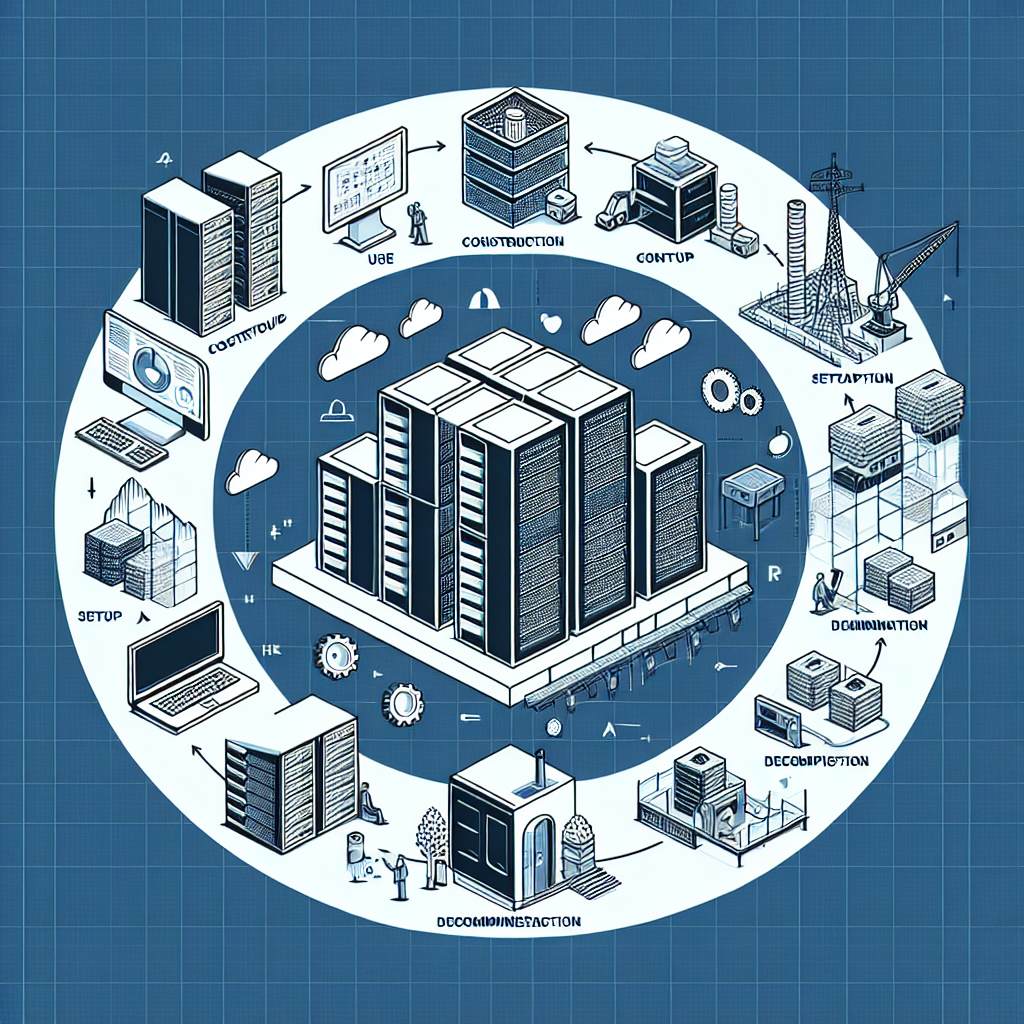
From Design to Decommission: A Comprehensive Guide to Data Center Lifecycle Management
Data centers are the backbone of modern technology infrastructure, housing the servers, networking equipment, and storage devices that power our digital world. From small businesses to large enterprises, data centers play a critical role in ensuring the availability, reliability, and security of the data and applications that drive our daily lives.But managing a data center is not a one-time task; it requires careful planning, execution, and maintenance throughout its lifecycle. From design to decommission, data center lifecycle management involves a series of steps and processes to ensure that the data center operates efficiently and effectively.
The first step in data center lifecycle management is the design phase. This involves determining the requirements for the data center, such as the size, power capacity, cooling requirements, and security measures. The design phase also includes creating a detailed floor plan, equipment layout, and network architecture to ensure optimal performance and scalability.
Once the design is finalized, the next step is the deployment phase. This involves installing and configuring the necessary hardware, software, and networking equipment to bring the data center online. During this phase, it is important to test and validate the infrastructure to ensure that it meets the operational requirements and performance metrics.
After the data center is up and running, the next phase is the operation and maintenance phase. This involves monitoring the data center’s performance, managing capacity and resources, and addressing any issues or outages that may arise. It also includes regular maintenance tasks such as cleaning, updating software, and replacing hardware components as needed.
As the data center ages and technology evolves, the next phase is the upgrade and expansion phase. This involves making improvements to the data center infrastructure, such as adding more servers, upgrading networking equipment, or implementing new cooling technologies. It also includes expanding the data center footprint to accommodate growth and scalability.
Finally, the last phase in data center lifecycle management is the decommission phase. This involves retiring or decommissioning the data center once it reaches the end of its useful life. This may involve transferring data and applications to a new data center, recycling or disposing of old equipment, and ensuring that sensitive information is securely wiped from storage devices.
In conclusion, data center lifecycle management is a comprehensive process that involves planning, deploying, operating, upgrading, and decommissioning a data center. By following a structured approach and implementing best practices, organizations can ensure that their data center infrastructure remains reliable, efficient, and secure throughout its lifecycle.
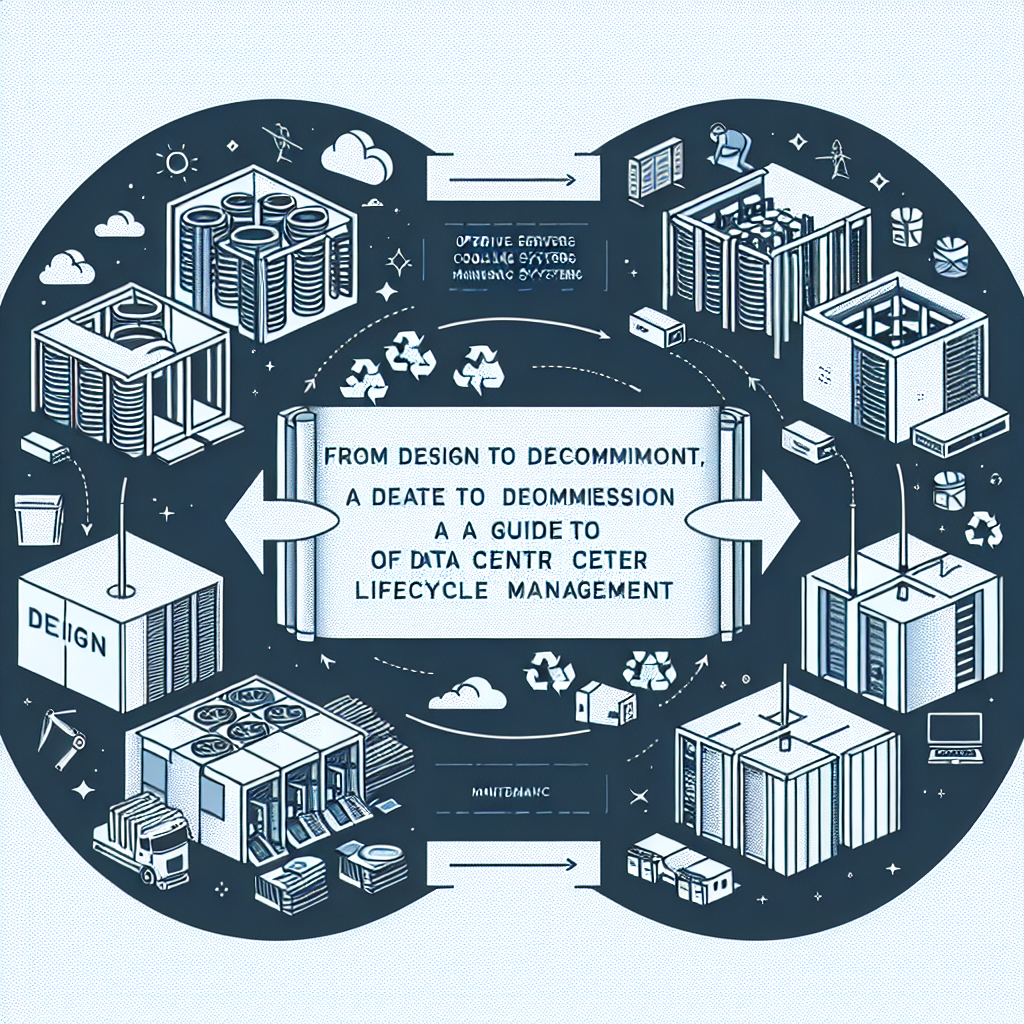
From Design to Decommission: A Guide to Data Center Lifecycle Management
Data centers are the backbone of modern technology infrastructure, serving as the nerve center for storing, processing, and transmitting data. As organizations continue to rely on data centers to support their operations, it becomes increasingly important to manage the lifecycle of these facilities effectively. From design to decommission, proper data center lifecycle management is essential to ensure optimal performance, efficiency, and cost-effectiveness.The data center lifecycle begins with the design phase, where key decisions are made regarding the layout, infrastructure, and capacity of the facility. During this phase, it is crucial to consider factors such as power and cooling requirements, scalability, redundancy, and security. Working with experienced data center designers and engineers can help ensure that the facility is tailored to meet the organization’s specific needs and requirements.
Once the data center is operational, ongoing monitoring and maintenance are essential to ensure optimal performance and reliability. Regular inspections, testing, and maintenance of critical systems such as power distribution, cooling, and fire suppression are necessary to prevent downtime and ensure uninterrupted operation. Implementing a proactive maintenance schedule can help identify and address potential issues before they escalate into costly problems.
As technology evolves and data center requirements change, it may become necessary to upgrade or expand the facility. This could involve adding additional servers, storage, or networking equipment, as well as implementing new technologies such as cloud computing or virtualization. Proper planning and coordination are essential to ensure that the expansion is seamless and does not disrupt ongoing operations.
At some point, the data center may reach the end of its useful life and require decommissioning. This could be due to factors such as outdated technology, changing business needs, or the need to consolidate operations. Decommissioning a data center involves safely shutting down and removing all equipment, ensuring that sensitive data is securely erased or transferred, and properly disposing of any hazardous materials. Working with experienced data center decommissioning specialists can help ensure that the process is completed efficiently and responsibly.
In conclusion, effective data center lifecycle management is essential to ensure the long-term success and sustainability of a data center facility. From design to decommission, each phase of the lifecycle requires careful planning, monitoring, and maintenance to ensure optimal performance, efficiency, and cost-effectiveness. By following best practices and working with experienced professionals, organizations can maximize the value of their data center investments and adapt to changing technology requirements.
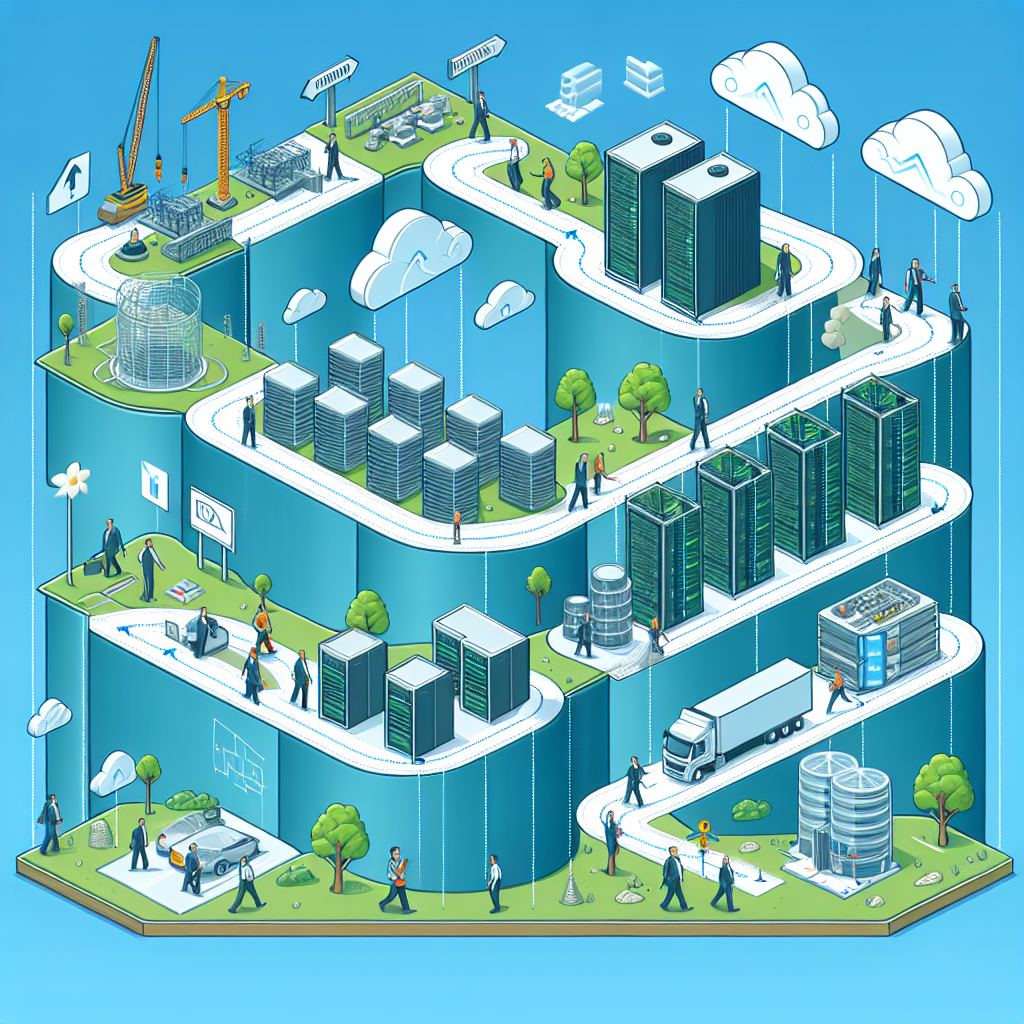
From Design to Decommission: The Lifecycle of a Data Center
Data centers are the backbone of the digital world, serving as the physical infrastructure that supports the vast network of information and services that we rely on every day. From hosting websites and storing data to powering cloud services and enabling real-time communication, data centers play a crucial role in keeping the modern world connected.But the lifecycle of a data center is more complex and involved than one might think. It begins with the design and construction of the facility, continues through years of operation and maintenance, and eventually culminates in decommissioning and decommissioning.
The first step in the lifecycle of a data center is the design phase. This involves determining the size and layout of the facility, selecting the appropriate equipment and technology, and ensuring that the infrastructure meets the needs of the organization. Factors such as cooling systems, power supply, and security measures must all be carefully considered during the design process to ensure optimal performance and reliability.
Once the design is finalized, construction begins. This phase involves the physical building of the data center, including the installation of servers, networking equipment, and other necessary components. Construction must be carried out with precision and attention to detail to ensure the facility meets industry standards for performance, efficiency, and safety.
After construction is complete, the data center enters the operational phase. This is where the facility is up and running, serving its intended purpose of storing and processing data. During this phase, regular maintenance and monitoring are crucial to ensure the smooth operation of the data center. This includes tasks such as system updates, equipment checks, and troubleshooting any issues that may arise.
As technology evolves and data center requirements change, there may come a time when the facility needs to be decommissioned. This could be due to factors such as outdated equipment, changes in business needs, or the need for a more efficient and modern facility. Decommissioning involves shutting down the data center, removing equipment, and disposing of any remaining assets in an environmentally responsible manner.
Overall, the lifecycle of a data center is a complex and intricate process that requires careful planning, execution, and management. From design and construction to operation and decommissioning, each phase plays a critical role in ensuring the efficiency, reliability, and sustainability of the facility. By understanding and effectively managing the lifecycle of a data center, organizations can maximize their investment in this vital piece of infrastructure and continue to support the digital world for years to come.

From Design to Decommission: The Complete Data Center Lifecycle Management Process
Data centers are an essential component of modern businesses, serving as the backbone of their digital operations. From storing critical information to hosting online applications, data centers play a crucial role in ensuring the smooth functioning of organizations. However, managing a data center is not a one-time task; it involves a continuous lifecycle process that begins with design and ends with decommissioning.The complete data center lifecycle management process encompasses various stages, each of which plays a significant role in ensuring the efficiency and reliability of the data center infrastructure. Let’s take a closer look at each stage of the data center lifecycle management process:
Design:
The first stage of the data center lifecycle management process is design. During this stage, the data center’s architecture, layout, and infrastructure are planned and designed to meet the organization’s specific requirements. Factors such as scalability, redundancy, and energy efficiency are taken into consideration to ensure the data center’s optimal performance.
Construction:
Once the design phase is completed, the construction phase begins. This stage involves building the physical infrastructure of the data center, including installing servers, networking equipment, cooling systems, and security measures. The construction phase must be carried out meticulously to ensure that the data center meets industry standards and regulations.
Commissioning and Testing:
After the construction phase is completed, the data center undergoes commissioning and testing to ensure that all systems are functioning correctly. This stage involves testing the data center’s cooling, power, and networking systems to identify any potential issues or bottlenecks that may impact performance.
Operation and Maintenance:
Once the data center is up and running, the operation and maintenance stage begins. This stage involves monitoring the data center’s performance, conducting regular maintenance checks, and implementing upgrades or repairs as needed. Proper operation and maintenance are essential for ensuring the data center’s reliability and efficiency.
Optimization:
As technology evolves, data centers must be optimized to keep up with the latest advancements. The optimization stage involves implementing new technologies, upgrading existing systems, and making adjustments to improve the data center’s performance and efficiency.
Decommissioning:
The final stage of the data center lifecycle management process is decommissioning. This stage involves retiring the data center infrastructure, either due to obsolescence or relocation. Decommissioning must be carried out carefully to ensure that data is securely erased and equipment is disposed of responsibly.
In conclusion, managing a data center involves a comprehensive lifecycle process that includes design, construction, commissioning, operation, maintenance, optimization, and decommissioning. By following a structured lifecycle management process, organizations can ensure the smooth functioning of their data center infrastructure and maximize its efficiency and reliability.
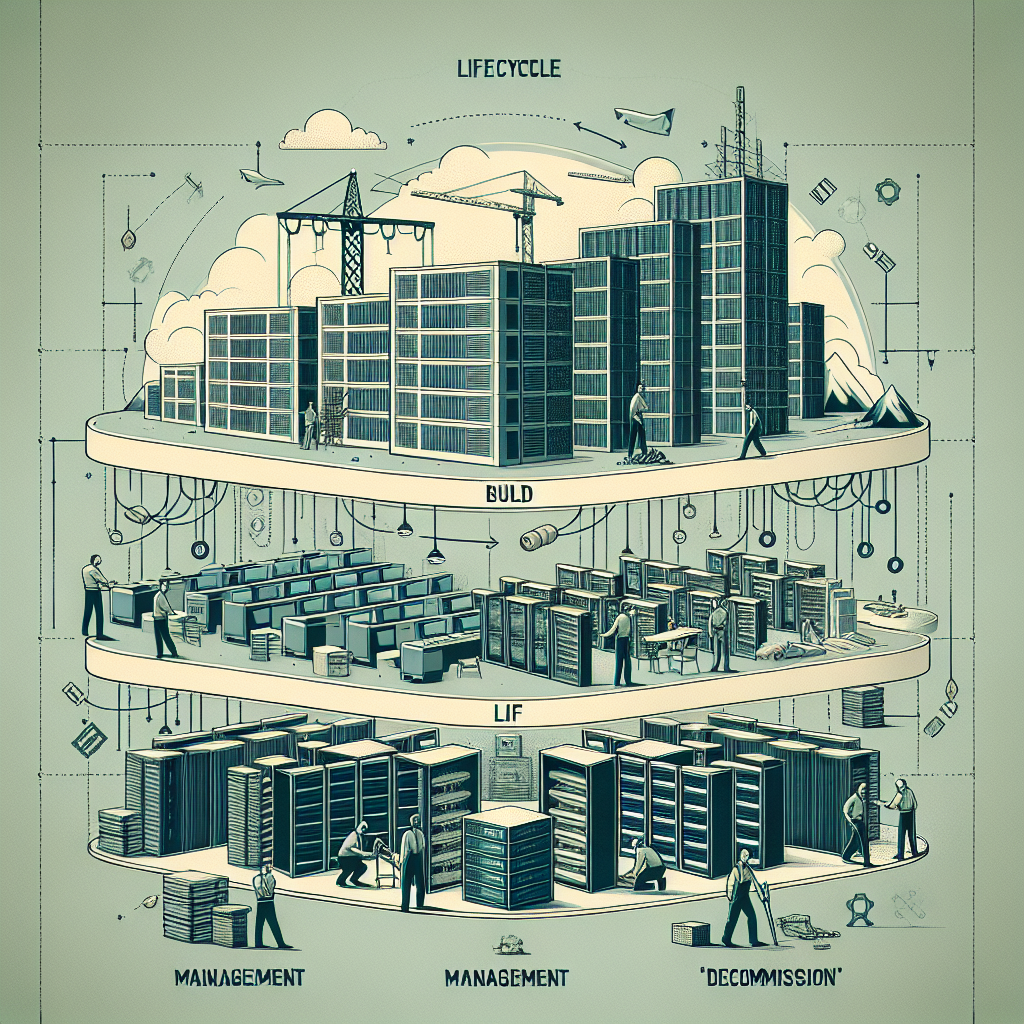
From Build to Decommission: A Comprehensive Guide to Data Center Lifecycle Management
Data centers are the backbone of modern businesses, housing the critical infrastructure necessary for storing, processing, and managing large volumes of data. However, managing a data center throughout its lifecycle – from initial construction to decommissioning – can be a complex and challenging task. In this comprehensive guide, we will break down the key stages of data center lifecycle management and provide valuable insights and best practices for each phase.1. Build Phase:
The build phase is the initial stage of data center lifecycle management, where the physical infrastructure of the data center is constructed. This phase involves site selection, design, procurement of equipment, installation, and commissioning. It is crucial to work with experienced professionals, such as architects, engineers, and project managers, to ensure that the data center is designed and built to meet the organization’s current and future needs.
During the build phase, it is important to consider factors such as power and cooling requirements, scalability, redundancy, security, and compliance with industry standards and regulations. Regular site visits and progress updates are essential to monitor the construction process and ensure that the data center is being built according to specifications and timelines.
2. Operation Phase:
Once the data center is built and commissioned, it enters the operation phase, where it is used to store and process data for the organization. During this phase, it is important to establish robust operational processes and procedures to ensure the smooth and efficient running of the data center.
Key activities during the operation phase include monitoring and managing power and cooling systems, maintaining equipment and infrastructure, performing regular audits and assessments, implementing security measures, and ensuring compliance with industry standards and regulations. Regular performance testing and capacity planning are also essential to identify and address any potential issues before they impact the data center’s operations.
3. Maintenance Phase:
The maintenance phase involves regular upkeep and maintenance of the data center’s infrastructure and equipment to ensure optimal performance and reliability. This includes preventive maintenance, such as cleaning, inspections, and tests, as well as reactive maintenance to address any issues or failures that may arise.
It is important to develop a comprehensive maintenance schedule and implement a proactive maintenance strategy to minimize downtime and ensure the longevity of the data center’s equipment. Regular maintenance tasks should be documented and tracked, and any maintenance activities should be performed by trained and qualified personnel to ensure safety and compliance.
4. Decommissioning Phase:
The decommissioning phase marks the end of the data center’s lifecycle, where it is retired and removed from operation. Decommissioning a data center involves safely shutting down systems, removing equipment, and disposing of assets in an environmentally responsible manner.
During the decommissioning phase, it is important to develop a decommissioning plan that outlines the steps and processes for decommissioning the data center, including data migration, equipment disposal, and contract termination. It is also important to work with vendors and service providers to ensure that data is securely erased, equipment is properly recycled or disposed of, and any contractual obligations are fulfilled.
In conclusion, data center lifecycle management is a complex and multifaceted process that requires careful planning, execution, and monitoring at every stage. By following best practices and leveraging the expertise of professionals, organizations can ensure that their data centers are built, operated, maintained, and decommissioned effectively and efficiently.
